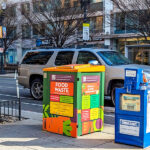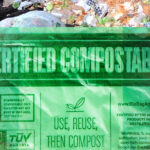Top: A new animal feed definition for dried recovered household food will create a regulatory pathway for the output of Mill’s in-home food recycling service. Photo courtesy of Mill
Mill, an in-home food recycling service, announced on August 10 that a new animal feed ingredient definition for Dried Recovered Household Food received a unanimous vote of approval from the Association of American Feed Control Officials (AAFCO) Ingredient Definition Committee. The vote follows a recommendation from the Food and Drug Administration (FDA) earlier this summer. Although the new definition still needs to clear two procedural votes later in 2023 before its expected inclusion in the AAFCO Official Publication in January 2024, the committee vote and FDA recommendation were the “most rigorous regulatory reviews required and demonstrate significant confidence in and momentum around the definition,” states Mill. “Restaurants and grocery stores can send uneaten food back to farms to feed poultry, enabled by AAFCO definitions and existing circular infrastructures. But a regulatory pathway for uneaten food from households hadn’t existed until now due to the lack of a viable model to ensure the safety, quality, and consistency of food in homes at scale, or one that enables safe source separation at the household level easily, or an efficient system to get that resource back to farms.”
Launched in January 2023, Mill markets (via a subscription model) a connected kitchen bin, which includes sensors, scales, algorithms, and drying technologies that weigh and dehydrate food scraps to less than 12% moisture content overnight. The resulting material is called Food Grounds™. Once enough have been accumulated, households put them in a postage-paid box that is set out on the doorstep and picked up by the U.S. Postal Service. Food Grounds are shipped to Mill’s first feed facility in Mukilteo, Washington where they are run through a series of processing steps that includes inspection, screening, microbial control, and more, to ensure the collected materials can be safely turned into food for chickens. By blending a variety of different households’ Food Grounds, Mill obtains a sufficiently consistent product for poultry farmers and their nutritionists, who prescribe the final complete feed product.
“This historic new regulatory pathway isn’t just good news for Mill, it’s a win for the broader industry and the planet: recycling uneaten household food into animal feed offers a scalable new way to more sustainably feed the growing global population while slashing methane emissions,” explains Harry Tannenbaum, Cofounder and President at Mill. “The new poultry feed ingredient definition unlocks a massive opportunity to prevent waste, conserve nutrients and reduce emissions — and allows Mill to offer a truly closed-loop service to customers, and an alternative, safe, nutritious, and consistent feed ingredient for farmers. We are grateful for the thoughtful, rigorous, and effective collaboration with regulators, and give AAFCO and FDA a lot of credit for recognizing the state-level interest and momentum in preventing waste and getting recovered household food to a higher and better use.”













